Key Takeaways:
- RAG (Retrieval-Augmented Generation) is a method that enhances large language models (LLMs) by connecting them to external knowledge sources (documents, websites) to generate more accurate, context-aware responses, tailored to your business.
- RAG enables AI voice agents to significantly reduce hallucinations of LLMs, lower call center costs by minimizing call escalations, and improve customer experience by delivering fast responses grounded in real company data.
- VoiceSpin uses RAG to power its AI voice agent, allowing businesses to easily train it with their own data for highly accurate, human-like responses. Unlike standalone AI voice agent solutions, it’s part of a full-featured contact center platform.
AI voice agents (AI voice bots, AI phone agents, or whatever you prefer to call them) are becoming incredibly popular as more businesses, big and small, are looking for ways to automate their voice interactions with customers and prospects. And thanks to RAG (Retrieval-Augmented Generation), these solutions have become much smarter.
Instead of relying solely on pre-trained data, RAG-based AI voice agents can tap into company knowledge in real time and generate highly relevant and more accurate responses, helping you deliver a better customer experience in every automated voice interaction.
In this blog, we’ll take a closer look at how RAG-based AI voice agents work and how Retrieval-Augmented Generation makes them more efficient.
What is Retrieval-Augmented Generation (RAG)?
Retrieval-Augmented Generation (RAG) is an AI framework that enhances the capabilities of Large Language Models (LLMs) with real-time, domain-specific knowledge. Simply put, RAG provides LLMs with more context to ensure they are able to generate more reliable responses while also reducing the risk of hallucinations. You can think of it as an “open book” for LLMs, allowing them to look up relevant data before coming up with a response to a user query.
The process involves 3 steps:
- Retrieval: First, when a user asks a question, the information retrieval component searches external data sources to pull the most relevant information.
- Augmentation: Next, AI adds the retrieved information to the user’s query as additional context and then feeds the LLM with the augmented prompt.
- Generation: Finally, the LLM generates a more accurate, fact-grounded response as it now has more relevant context to rely on.
So, the key challenges RAG helps businesses address:
- Limited training data: LLMs are trained on vast datasets, but here’s the hitch: these datasets have a cutoff point. That literally means LLMs can’t access the latest information or highly-specialized, domain-specific knowledge (let’s say, your company’s internal policies).
- AI hallucinations: When AI doesn’t have access to specific facts, it will typically fill in the gaps by generating stuff that might sound reasonable and authentic but is completely incorrect or misleading in reality. That’s known as AI hallucinations and it’s a real problem in AI agents.
- Costly model retraining: While you can potentially update an LLM’s knowledge base or make it more specialized, you’d have to retrain or fine-tune the entire model. And that requires expensive computational resources, especially when dealing with large datasets or frequent updates.
How Does RAG Work in AI Voice Agents/ AI Voice Bots?
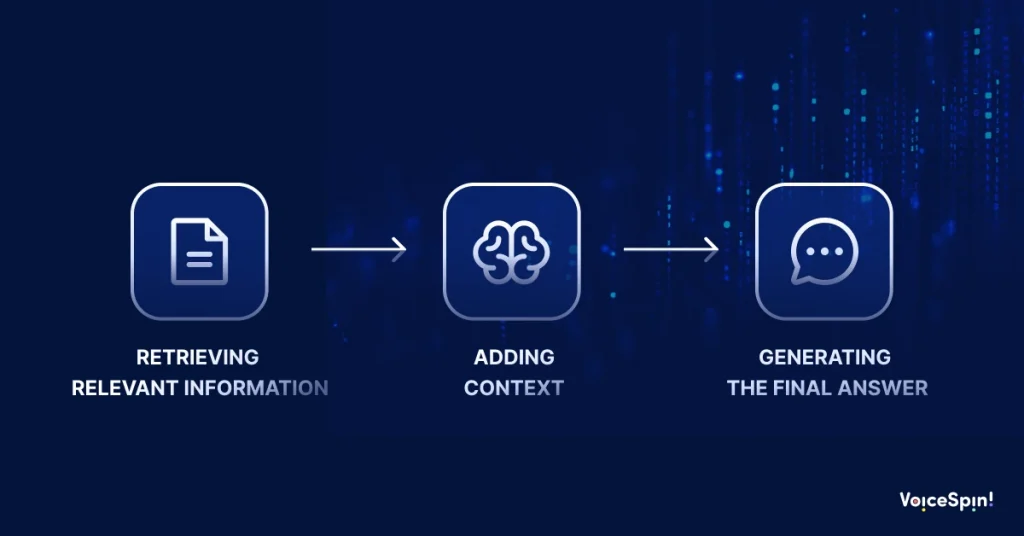
Here’s a quick breakdown of how exactly AI voice agents/ AI voice bots leverage RAG in real-time customer conversations:
Building the library (document collection)
First, you need to gather and upload all the important information you want your AI voice agent to know. Think of it as creating a library that your AI agent will pull information from (the brain of your RAG system). This can include your website content, help center articles, product manuals, company policies, internal documentation, or whatever you’ve got. Obviously, the more comprehensive this library (corpus) is, the better your AI voice bot will perform.
But these documents are not stored as-is. Instead, they are converted into vector embeddings that capture their meaning and are stored in a vector database for easy semantic search.
User input and document similarity search
Next, imagine a customer asks your AI voice agent, “How do I integrate your CRM with my accounting software?” Instead of looking for an exact match, the AI agent searches its knowledge base for documents that are semantically similar (meaning they closely match the intent of the question). It prioritizes content that includes phrases like “CRM integration”, “accounting software”, or mentions of specific platforms to quickly surface the most relevant information.
Post-processing with LLMs (generating an answer)
Now that the system has the most relevant documents, they are passed along with the original user query to a Large Language Model (like GPT-4, Claude, or another LLM). The LLM’s job is then to read and interpret the retrieved data and generate a coherent, accurate, and contextually appropriate response. The generated text response is then converted back into natural-sounding speech using Text-to-Speech (TTS) technology.
That’s how Retrieval-Augmented Generation makes AI voice agents/ AI voice bots smarter and more efficient in handling customer interactions.
What are the Benefits of Implementing RAG-powered AI Voice Agents/ Voice Bots?
When it comes to the specific benefits of implementing a RAG AI agent to automate your voice-based call center operations, it all comes down to the three key advantages:
1. Reduced AI hallucinations = more accurate answers
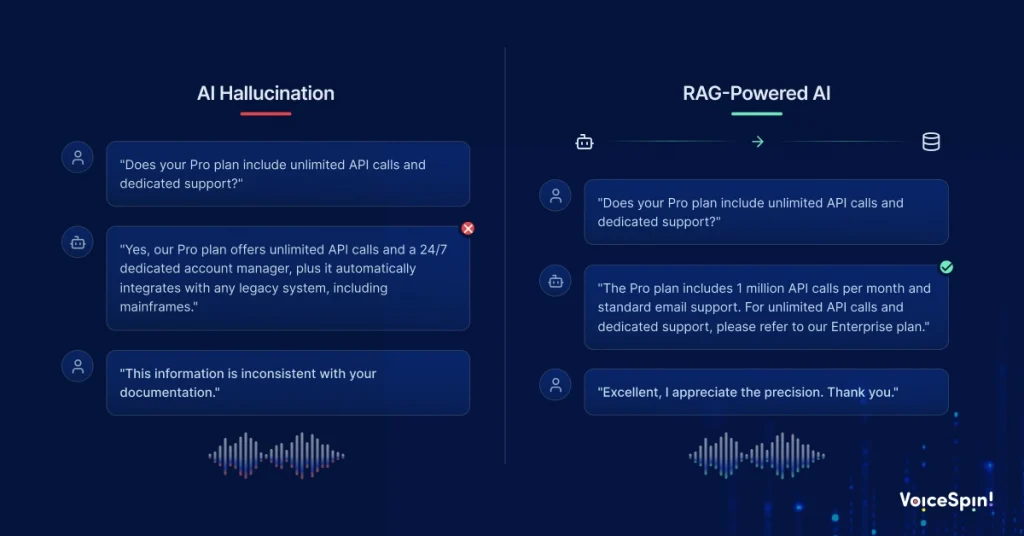
First and foremost, implementing a RAG-based AI voice agent helps you eliminate AI hallucinations by making sure it pulls information from your knowledge sources. AI hallucinations occur when LLMs generate fabricated answers (because they lack context) and present them as authentic. And that happens way too often. In fact, Tidio’s study found that nearly 86% of people have experienced AI hallucinations, and 77% have been misled by AI hallucinations at least once.
Is that really a big deal for businesses? Well, it actually is. When AI agents (chatbots or voice bots) hallucinate, it can mislead customers, lead to poor customer experiences, damage brand reputation, create legal and compliance risks, increase support costs, and hurt sales opportunities.
For example, Air Canada learned the hard way how AI chatbot mistakes can backfire after a customer, misinformed about bereavement fares by the airline’s AI chatbot and charged full price, took legal action against the company.
2. Fewer call escalations = reduced call center costs
Let’s be honest, one of the major reasons for businesses to implement AI voice agents is to reduce call center costs. But you can expect significant cost savings only if your AI voice agent is actually able to handle a certain percentage of customer interactions independently, without having to escalate calls to your human agents.
The primary driver of call escalations is the AI agent’s inability to provide complete and accurate answers on the first interaction. RAG directly addresses this by giving the AI voice agent real-time access to the company-specific knowledge base (internal policies, FAQs, troubleshooting guides, etc.).
If someone asks, for example, “Can I return my recent purchase?”, the AI agent will instantly retrieve information straight from the latest version of your return policy and deliver the right answer. Fewer call escalations mean less reliance on more expensive human reps and more cost savings.
3. Better speed and efficiency = improved customer experience
Your customers want immediate answers as soon as they call. According to a Salesforce survey, 83% of customers expect to interact with someone immediately when they reach out to a brand with a question or an issue.
Moreover, based on research from Invoca, 5% of people will hang up immediately when being put on hold, while only 6% are willing to stay on hold for 30 minutes or longer. But customers don’t just want speed – they value efficiency, too, because when they get incorrect or incomplete information, that leads to frustration and loss of trust.
RAG-powered AI voice agents don’t guess and don’t make things up – they pull information from real documents to ensure each answer is contextually relevant, grounded, and accurate, ensuring a better customer experience. And that’s particularly critical for industries like healthcare, finance, legal services, or SaaS, to name just a few.
For example, if a customer has an issue with your product feature, a RAG-powered AI voice agent won’t just generate some random guess on how to get it working properly – it will pull the exact instructions from your product manual and guide the customer just like your human agent would.
What are the Common RAG AI Agent Use Cases in Contact Centers?
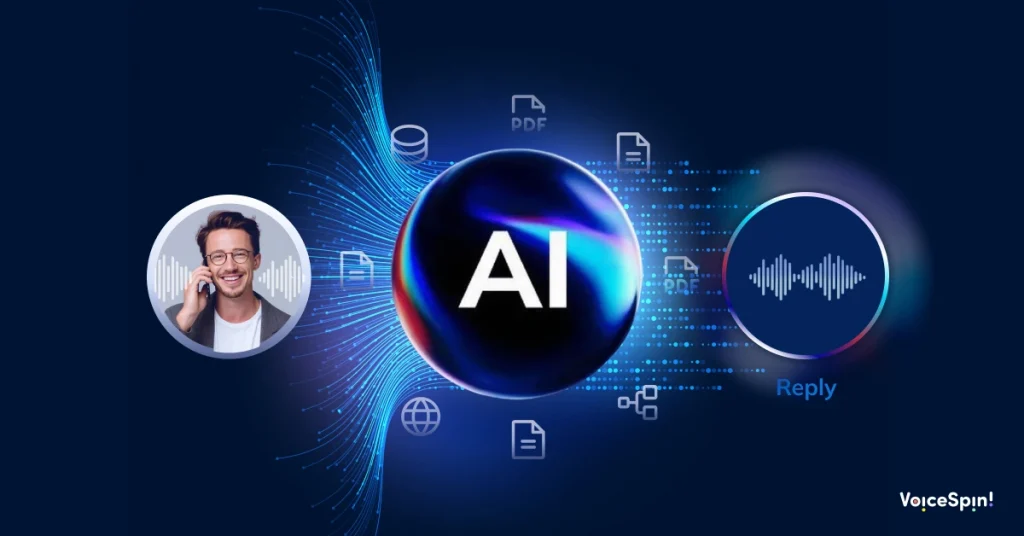
- Troubleshooting and tech support: When customers are having technical issues, RAG–powered AI voice agents can instantly access troubleshooting guides, FAQs, and product manuals to help them resolve queries quickly and efficiently.
- Policy and product information queries: Similarly, when customers or prospects ask questions about product specs, pricing plans, or service policies, RAG AI agents can pull the most up-to-date information directly from internal sources to provide accurate answers.
- Appointment scheduling and management: Appointment scheduling often involves more than just checking and confirming availability. There may be specific preparation instructions or cancellation policies. With RAG, AI agents can provide this information in real time.
- Lead qualification and sales support: In sales environments, RAG AI voice agents can quickly retrieve detailed product specifications, competitive comparisons, and eligibility criteria based on a prospect’s questions, helping qualify leads effectively.
- Customer onboarding: This one is particularly helpful in SaaS. RAG AI voice agents can guide new customers through the onboarding process, answering their questions, explaining features, and helping configure settings using content pulled from tutorials, help docs, and product guides.
Automate Your Call Center Operations with VoiceSpin’s RAG-powered AI Voice Agent
To recap, RAG strikes the ideal balance between factual accuracy and natural, conversational responses, making it a critical technology behind AI-powered voice agents. By pulling data from company-specific knowledge sources and using the power of LLMs to generate human-like responses, RAG makes AI agents smarter and ensures customers or prospects get the right answers, each and every time.
VoiceSpin has always been at the forefront of AI innovations in the contact center software industry. That’s why our AI voice agent solution is powered by RAG. With VoiceSpin, you can easily build and train your AI voice agent using your own data by simply uploading your PDF documents, text files, and website content through our intuitive builder interface. That gives your voice AI agent the ability to respond with the same accuracy and awareness as an experienced human rep who has all the information at their fingertips.
You can use VoiceSpin’s RAG-powered AI voice agent in various use cases like:
- Customer support: to deliver 24/7 support, answer the most common questions, and help customers resolve issues without relying on your human reps.
- Process automation: to automate the processes of scheduling appointments, providing order status updates, and delivering critical information.
- Sales automation: to automate cold calling, upselling/ cross-selling, and order processing, while also providing highly personalized product recommendations.
- Lead qualification: to handle the initial lead qualification process, schedule demo calls/ sales presentations, and automate lead follow-ups.
- Proactive outreach: to automate debt collection and reminders, proactive notifications, and survey/ customer feedback collection.
On top of that, we’re offering not just a standalone AI voice agent platform. With VoiceSpin, you actually get a full-suite contact center platform with built-in telephony, access to local numbers in 160+ countries, AI predictive dialing, AI speech analytics, omnichannel messaging, and other tools for customer service and sales teams. Plus, beyond AI voice agents, you can also build an AI chatbot to automate your digital interactions.
If you’re ready to invest in voice AI agents to drive automation and performance, RAG is essential behind the scenes. Book a demo call now to see VoiceSpin’s AI voice agent in action and learn how it can help you automate your call center operations without compromising on customer experience.
Frequently Asked Questions
What is agentic RAG?
Agentic RAG takes traditional RAG a step further by giving AI agents autonomy and reasoning capabilities. So, instead of just retrieving information and generating accurate responses based on retrieved context, agentic RAG allows the AI system to plan, reason, decide which tools to use, and iterate or refine results. Ultimately, it means that your agentic AI system can adapt to more complex queries, handle multi-step tasks effectively, perform iterative searches, and even validate its own results. The outcome? More flexible and accurate responses. Simply put, it’s like having an advanced AI voice agent that not only answers questions but can actually think through how to get the best answer.
What is a multi-agent RAG system?
RAG-based multi-agent systems involve multiple AI agents seamlessly working together, each handling a specific function. They can complete more advanced tasks and generally go beyond what a single AI agent can handle. So, when developing multi-agent systems with RAG, you’d have to set up several specialized AI agents that can operate simultaneously to enhance efficiency and response quality. For example:
- Retrieval Agent: pulls relevant documents from integrated knowledge sources
- Generation Agent: generates responses based on the retrieved context and user query
- Coordinator Agent: coordinates interactions between the retrieval and generation agents
This modular approach is aimed at improving the accuracy, efficiency, and flexibility of RAG systems.
What are RAG chatbots?
RAG chatbots are basically AI chatbots powered by Retrieval-Augmented Generation (RAG) technology. Similarly to RAG-based voice bots, they combine real-time information retrieval with generative AI to deliver more accurate, context-aware responses. When you ask a question, a RAG chatbot doesn’t just rely on its initial training data (which is limited) – instead, it searches and pulls relevant information from external knowledge sources (your company knowledge). As a result, RAG chatbots are able to provide more factual responses, helping you reduce AI hallucinations that are common in LLMs.
What are the common RAG use cases in contact centers?
When it comes to Retrieval-Augmented Generation use cases in contact centers, customer support is definitely on top of the list. For example, RAG-powered AI agents (both voice agents and chatbots) can support customers by answering common questions, providing company-specific information (like return policies), and helping users troubleshoot product issues – all while improving FCR rates and reducing call escalations to human reps. Beyond that, RAG AI agents can be effectively used in sales environments as well, helping you upsell/ cross-sell and qualify leads effectively.

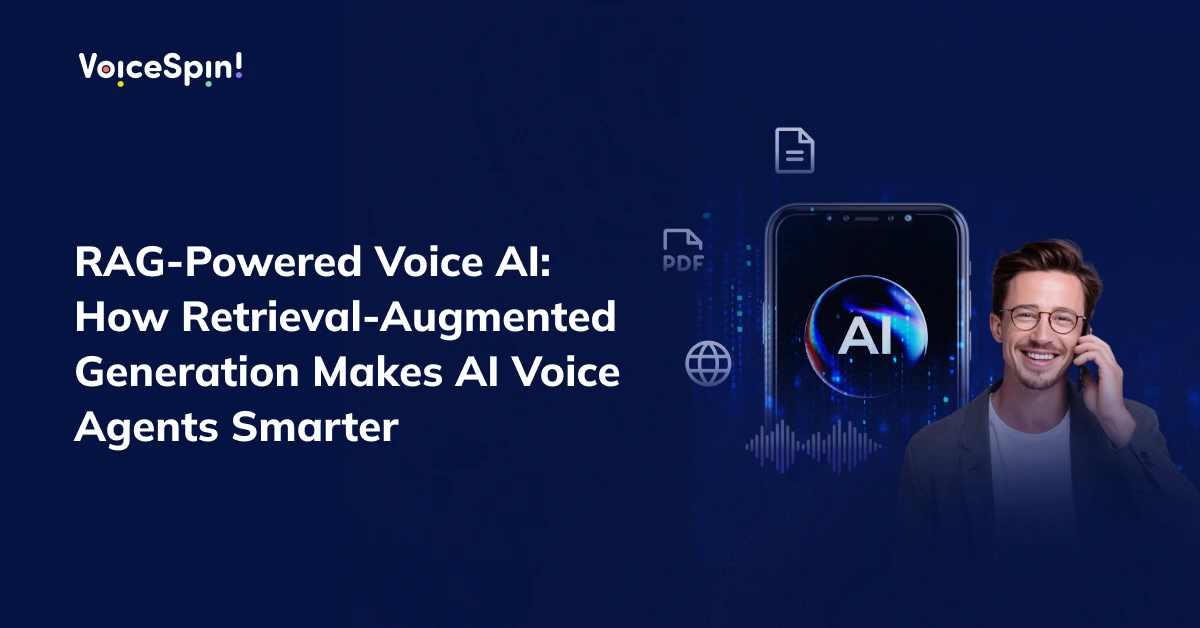
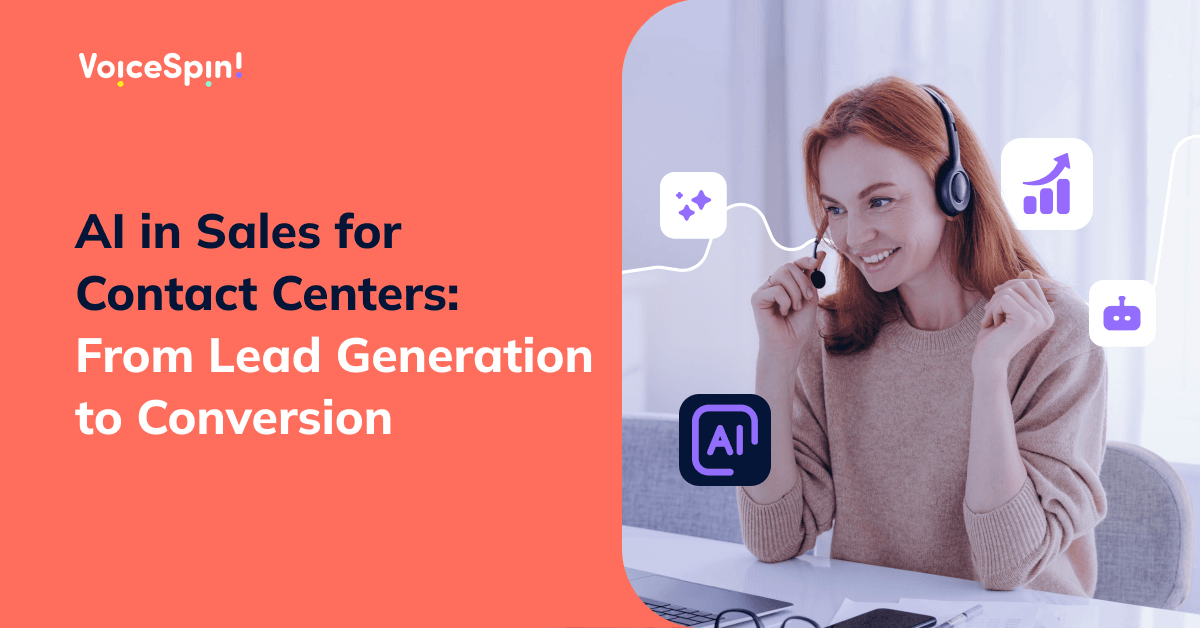
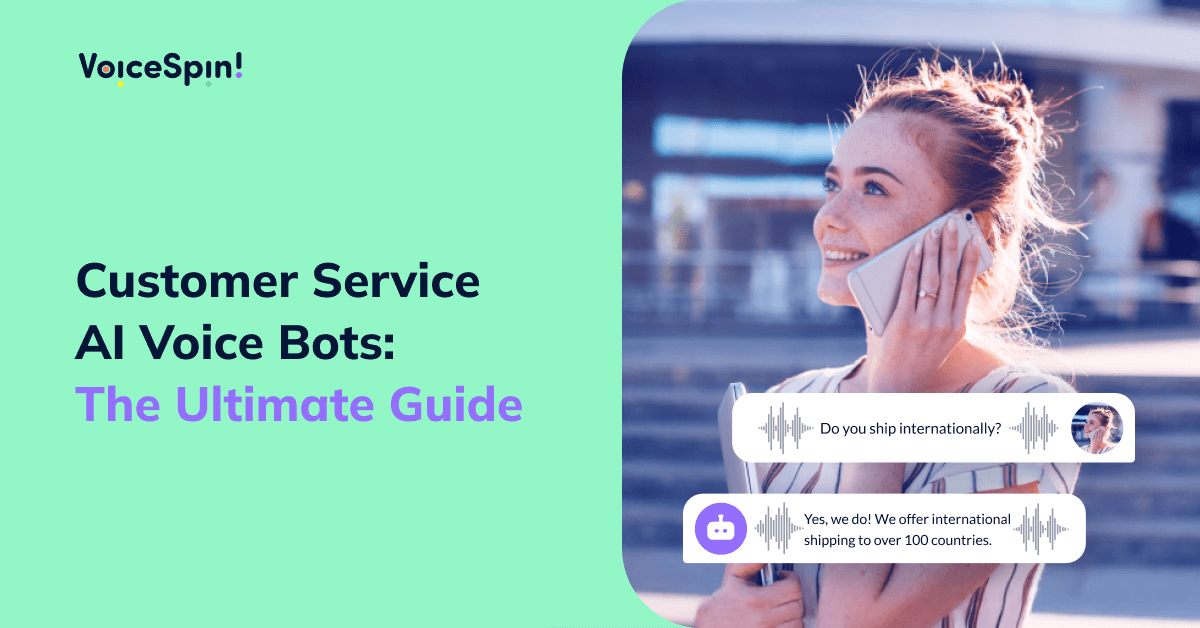
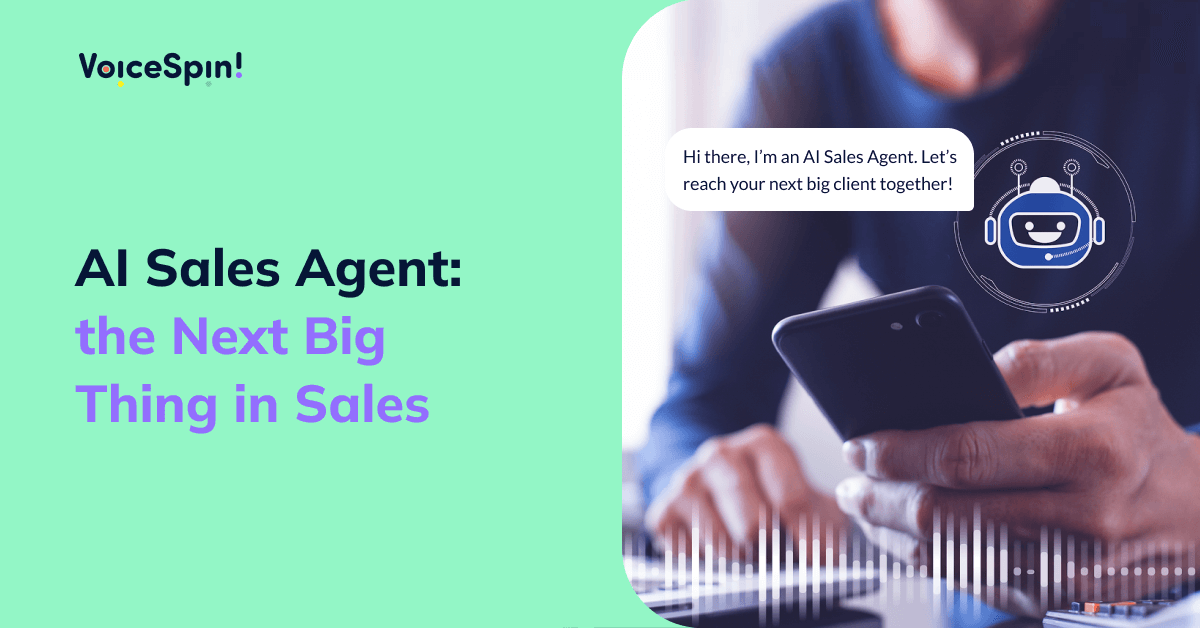
 +18889082995
+18889082995
 +442036084160
+442036084160
 +97237237006
+97237237006